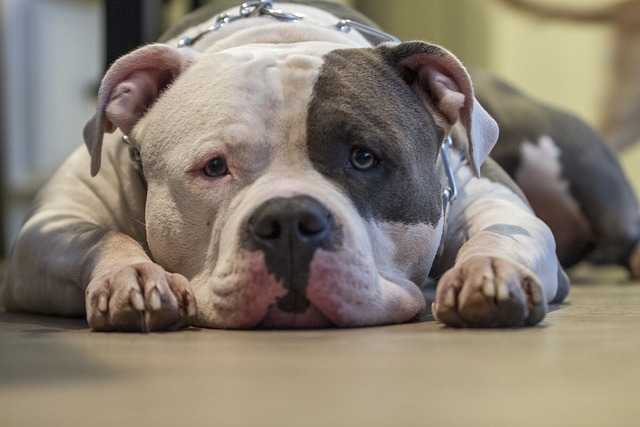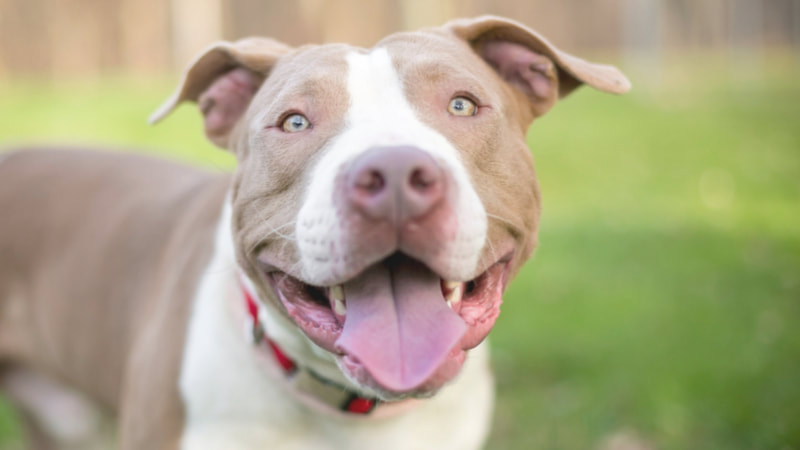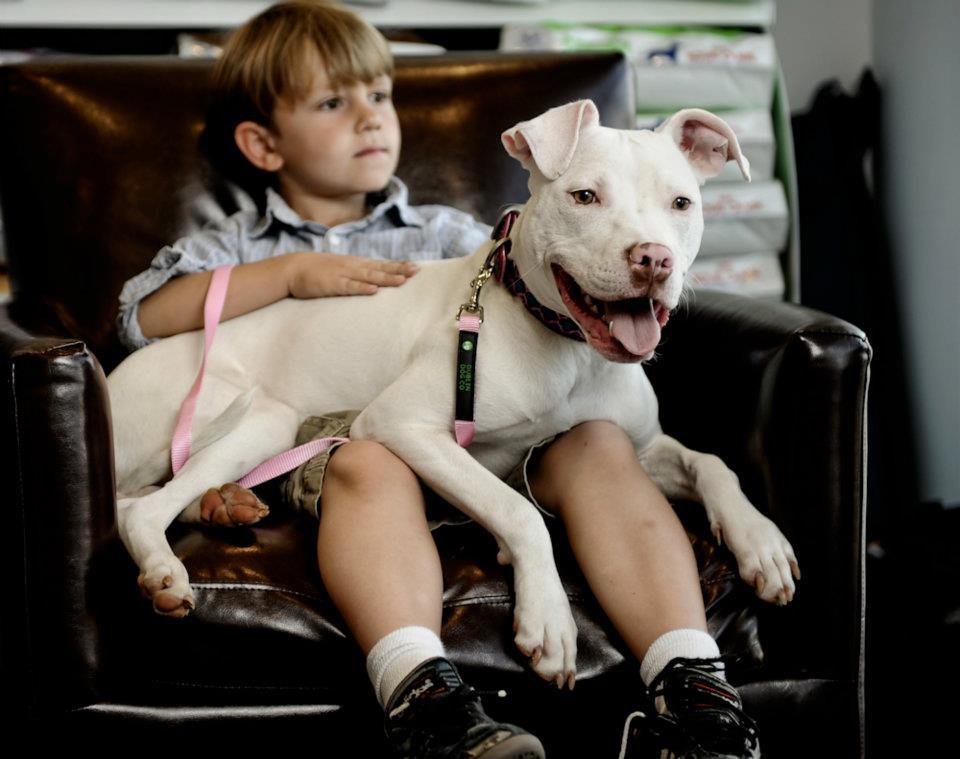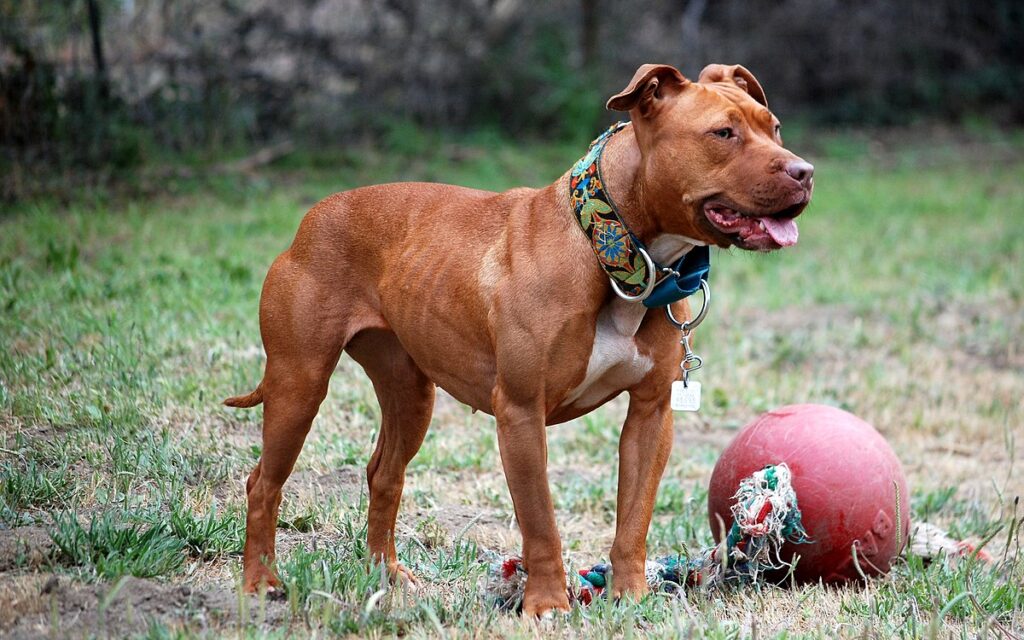You may have heard one of the many common myths about pit bulls out there — like that they have a locking jaw — but are these beliefs even true or a myth?
Pit bulls are one of the most misunderstood dog breeds in the world, and with all of the false information out there about them, it can be hard to know what’s a fact versus just another silly myth.

MYTH: Aggression towards other animals means people are next.
Unlike the case for humans – animal aggression and human aggression are not related to one another in the canine brain. A person who is abusive to animals is likely to cross species and be abusive towards humans, science tells us. A dog who is aggressive towards one animal, may or may not be aggressive towards another animal – it does not cross into other species, they are individual of one another.
Aggression towards humans is very abnormal for pit bull type dogs. They are not naturally or inherently aggressive towards humans. Aggression comes from many factors involving environment, development during critical periods, but most importantly, human shaping of behavior. Though trained for centuries to aggress on other dogs or bulls, they have never collectively been bred to be human-aggressive – a characteristic very different than animal aggression in canines. Additionally, it is frowned upon now in the responsible breeding community to breed any two dogs, (pit bull terriers or otherwise) that show signs of true animal or human aggression.

MYTH: Pit bulls were only bred for fighting.
It’s a common misconception that pit bulls were only bred to be fighting dogs, and because of that, every pit bull comes from a fighting history. However, that couldn’t be further from the truth.
“The overwhelming majority of pit bulls living in pet homes, rescues and shelters do not come from dog fighting lines,” Efimova said.

MYTH: It is best to get a puppy so that you can make it behave how you want it to.
Many people feel if they get a pit bull as a puppy they can train it to not be aggressive towards other dogs and increase the likelihood that the dog will have no undesirable behavior qualities.
Puppies can be a lot of fun and very rewarding, but with a new puppy there is no way of knowing how that dog will act as an adult.
One benefit of adopting a young adult or full grown pit bull is the ability to avoid the uncomfortable puppy behavior stage. This includes constant destructive chewing, house breaking, excessive and uncontrollable energy, teething and puppy biting, possible whining, howling, and barking for attention at night, and the time and effort it takes to begin teaching general manners and obedience.
Another benefit is that an adopter can know how an adult Pit Bull will do with other dogs, cats, children, car rides, and other certain situations. Bringing a puppy up in the most loving and social environment can only alter its predetermined genetic urges so much.
In other words, having a dog since puppyhood does not necessarily mean it will have all of the qualities desired in a pet. It may end up having some traits that are undesirable. An adult Pit Bull, however, will have more of an established personality, and an adopter can know what to expect with the dog.

MYTH: American Pit Bull Terriers lock their jaws.
Dr. Brisbin: “The few studies which have been conducted of the structure of the skulls, mandibles and teeth of pit bulls show that, in proportion to their size, their jaw structure and thus its inferred functional morphology, is no different than that of any breed of dog.
There is absolutely no evidence for the existence of any kind of “locking mechanism” unique to the structure of the jaw and/or teeth of the American Pit Bull Terrier.

MYTH: If adopting a Pit Bull, choose a puppy so you can shape its personality
A dog’s personality is as individual as ours and is innate. A dog’s character and traits don’t fully reveal themselves until adulthood. Suppose a would-be Pit Bull (or any dog breed) guardian has a particular personality in mind. In that case, it’s best to adopt a grown dog whose traits like energy level, degree of submissiveness to humans, or dog aggression is easily determined.

MYTH: Pit bulls aren’t affectionate.
Meet a pittie parent, and you’ll probably hear tons of stories about their “Velcro pittie.” Or better yet, sit on a couch where a pittie lives, and you’ll soon have a lap full of dog with her big eyes looking up at you, ready for some scratches.
These dogs are super affectionate, and they’re actually well-known for being some of the most cuddly dogs you can love.
While there’s tons of misinformation out there about pitties, remember that all dogs are individuals. When looking to adopt a new dog, don’t focus on breed — focus on who fits into your lifestyle the best. When you focus on personality over breed, you might just find a sweet pittie cuddling with you on the couch.

MYTH: Pit bulls’ brains swell/never stop growing.
This rumor started with the Doberman, and has since been said about game-bred dogs in general. The concept of an animal’s brain swelling or growing too large and somehow causing the animal to “go crazy” is not based in truth in any way.
Their brains grow at the same rate as any other dog, and the only time that a Pit Bull’s brain is going to swell is if it receives a serious injury. If an animal’s brain were to grow too big for its head, the animal would die.

MYTH: If a Pit Bull was never trained to fight, it will be safe with other dogs.
Pit bulls can live peacefully with other dogs and animals. However, the pit bull has historically been bred to take down large animals. Early and continual socialization can help a pit bull be more animal friendly. Genetics, however, play an important role in how the dog will respond to other dogs and animals.
Pit bull type dogs have been bred with a very high pain tolerance and strong will/work ethic. All dogs are individuals and carry their own unique set of traits and characteristics, however, having an understanding of what they were selectively bred for can help understand commonalities in their behavior.
Any dog can become uncomfortable enough for their fight/flight/freeze system to take over. Often in the case of pit bulls, (most certainly not always) given their breeding, their fight system may be engaged. Proper socialization, meeting their needs as they grow and develop, proper nutrition, and responsible ownership all play a role in preventing dog fights. All dog fights are preventable. Socialize any dog, pit bull or other, slowly with new dogs.
As is the case for any dog, a pit bull that was dog friendly at 7 months of age may suddenly show signs of intolerance of unfamiliar dogs around two years old given that is around the time of the last inset of maturity.

MYTH: Pit bulls aren’t good family dogs.
A common pit bull myth is that they don’t make good family pets. According to Efimova, who works with tons of pitties and their families, that just isn’t the case.
“We know that countless pit bull-type dogs and pit bull mixes make wonderful family dogs and pets and are loved by adults and children,” Efimova told The Dodo.
In fact, the American staffordshire terrier scored high for “affectionate with family” by the American Kennel Club.
The truth is, just like people, dogs are their own individuals, and you shouldn’t stereotype a dog from any breed (pit bulls, by the way, are a general type of dog and not even a breed). “All dogs are individuals, and this includes pit bull-type dogs,” Efimova said.

MYTH: Pit bulls are bad with other animals
Any individual dog can get along amazingly with other animals, while another dog from the same breed might not love other animals all that much. It all depends on the specific dog and not the breed.
“If getting along with other dogs or species in your home is important to you, then I would work to prioritize this when choosing the right dog for your family, regardless of breed,” Efimova said.

MYTH: Most dog-related incidents involve pitbulls
Most dog-related incidents that the media covers would surely give us an impression that most dog-related incidents involve pitties, but that just isn’t the case.
In fact, here are some dog bite statistics:
Most dog bites occur with dogs who are not spayed or neutered. (Source: The Humane Society)
25 percent of fatal dog bites were inflicted by chained dogs of many different breeds. (Source: Fatal Dog Attacks)
Over 30 breeds and dog types were associated with dog-bite fatalities. (Source: Journal of the American Veterinary Medical Association)
“First, it’s helpful to remember that we don’t hear about the overwhelming majority of dog bites occurring every day in the U.S. and the breeds involved,” Efimova said.
“Second, the media almost always refers to ‘pit bull’ vs. ‘dog’ in their headlines about dog-bite incidents involving pit bull-type dogs.”
And lastly, according to Efimova, visual breed identification is often faulty, and in many instances of media reports, the breed identification comes from a second- or third-hand account. This means that reporters might mistakenly classify a dog as a pit bull when the dog is actually a totally different breed altogether.
“Reports of pit bulls involved in dog bites are both overrepresented and sensationalized,” Efimova said.

MYTH: Pit bull terriers are more aggressive than other dogs.
Aggression is not a breed characteristic or personality trait, and is not specific to any one breed of dog. The American Temperament Test Society, which provides a uniform national program of temperament testing for dogs, has found that pit-bull-terrier-like dogs passed the test at a higher rate than many other dog breeds, including golden retrievers and border collies. While Pitbulls rank the highest in medical costs associated with dog bites due to their muscular body and strong jaws, they are not inherently aggressive without external influences of their environment.






Pingback: Fun Facts about Dogs - A Dog's Best Life